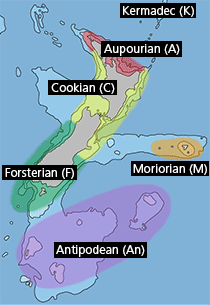This website has evolved from my passion for New Zealand Shells - collecting, studying, and photographing them.
The website focuses primarily on the Molluscan species found within the New Zealand Economic Zone. I have also included taxa/data from Macquarie Island (Australia), and other Sub-Antarctic Islands, along with areas north of NZ, eg. Norfolk Island, Lord Howe Island, when taxa and distributions overlap with NZ.
Identify by shape and form. A new tool has been added
to help identify some of the more commonly encountered species of marine, land and freshwater species around New Zealand.
Use the guide to narrow down your search by matching similar visual characteristics with the images.
Maps. I have included Google Maps to show some of the locations where species have been recorded. Some of these locations are only approximate, and do not necessarily represent the complete range, as new observations are continually being recorded.
Identification. I am always willing to help with identification of any species. Email me with a clear photo and I will try to help.
If you have any suggestions, enquiries or questions, please email me. Any comments would be appreciated.
Andrew Spurgeon
Checklist/Taxonomy. I use WoRMS as a reference for the current accepted taxonomy for species, and am adding direct links to WoRMS taxa pages for each species.
I am using older taxonomy for the larger Land Snails (Powelliphanta/Placostylus etc). Recent DNA has indicated that many of the sub-species are not valid and have been synonomysed in some checklists. I have chosen to keep the "sub-species" separated here, to indicate the various known populations, forms or colonies. The relationship between the various "sub-species", colonies and forms is continually under revision, so will be updated as more is known about these groups.
Sizes. An indication of normal maximum size is listed for most species. This may not necessarily be the largest recorded size (RLNZS), but is used to indicate the average maximum size. The largest recorded size is constantly changing for many species as larger specimens are being found, and many large specimens are never measured, so the maximum size is not always accurate.
While this website originally started from the checklist from New Zealand Mollusca - Powell 1979, and photos from my own collection, I have since drawn on information from various other sources.
I would like to acknowledge the Museum of New Zealand Te Papa Tongarewa and the Auckland Museum for the use of their records and photos. I have been able to add many photos of type specimens, along with locations, thanks to their online resources.
Other photos are sourced from other private NZ collections, past and present, to further supplement and provide a more extensive selection of the species of Mollusca from New Zealand.
Cookies are used on this website. They are used to save recently viewed information for the user only. They are stored locally on your computer or mobile device.
Tracking Cookies are not used and no personal information is collected, saved or shared.
By using this website, you accept these cookies. Clearing or turning off cookies for this website may limit website functionality and personal user experience.
